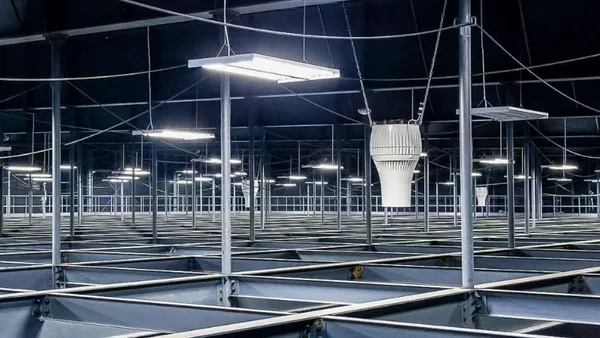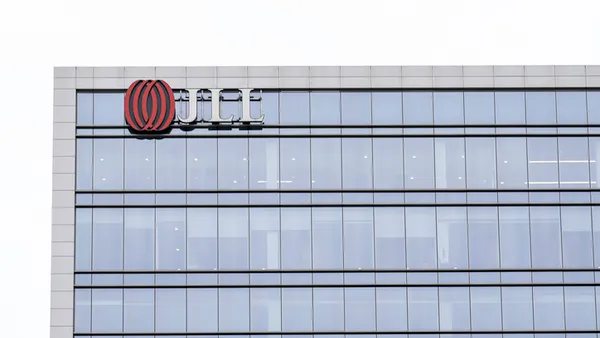Key Takeaways:
- Facilities managers are being asked to be more strategic and creative when it comes to optimizing the use of space—and controlling those costs without compromising the hybrid work experience.
- In addition to managing lighting, temperature and air quality, utilizing hybrid space effectively is also about intentionally designing spaces that foster collaboration, productivity and well-being.
- The push for sustainability and corporate responsibility puts energy reduction at the forefront of facilities management priorities. Hybrid work offers opportunities to meet those goals.
Organizations increasingly look to downsize their office space as they adopt hybrid work and see less need to have a massive real estate portfolio. A Knight Frank survey found that about 50% of major global companies will reduce their real estate in the next three years.
This shift is forcing facilities management to reevaluate how to best utilize reduced space to meet workplace expectations, such as maintaining a great workplace experience and supporting sustainability. As such, the role of the facilities manager is evolving to take on a more strategic and creative focus on smarter space utilization to reduce costs and ensure that spaces are used to their full potential.
In the hybrid work era, leveraging the right technology and data analytics and adopting sustainable practices are key to meeting the evolving needs of modern workplaces.
Controlling costs with space utilization insights
Facilities managers have always been responsible for controlling costs related to building operations and maintenance, but this responsibility has taken on added significance in a hybrid world. A potentially reduced workforce physically present in the office offers businesses more opportunities for cost-cutting and efficiencies.
Facilities managers can leverage space management technology to collect and analyze data on space utilization, energy consumption and maintenance needs. By understanding usage patterns—based on days of the week or the number of users—they can make accurate forecasts of future usage and demand, and make better informed decisions on space and energy needs.
“We could keep track of how often our workplace worked from the office,” said Aaliah Jacksi, Office Manager at Toyota Connected EU. “This helped us make an informed decision about what to do with the new office once we moved.”
Balancing new workplace expectations and priorities
The shift to hybrid work has underscored the need for agile and flexible office spaces. According to Gensler, having autonomy and freedom to work in different types of spaces in the office can improve the hybrid workplace experience, enhancing productivity and creativity.
“We asked [14,000 office workers across nine countries] about 16 different types of spaces beyond the individual desk and enclosed conference room,” said Gensler Global Director of Workplace Research Janet Pogue McLaurin. “Four categories of spaces essential for office workers started to emerge. They are spaces for individual work, creative group work, reflecting/restoring and connecting/recharging.”
Facilities managers have the opportunity to rethink the traditional office layout to meet employees’ varying work preferences and to accommodate a fluctuating number of employees. In addition to managing lighting, temperature and air quality, utilizing hybrid space effectively is also about intentionally designing spaces that foster collaboration, productivity and employee well-being.
Companies are also trying to create office designs that lure young workers back. More ‘Envy Offices’—an office trend that The New York Times describes as combining “the comforts of a living room and the glamor of a vacation”—are popping up, adding to the pressure for facilities managers to provide attractive amenities and services while managing costs.
Reducing energy use and carbon footprint
Tech companies ranked sustainability as their second-highest priority after operating cost reductions (JLL report). Hybrid work offers opportunities to meet sustainability goals. Efficient hot desking among hybrid workers can reduce carbon footprint by 28%, according to a study in the Proceedings of the National Academy of Sciences.
As hybrid work models become the standard, there is an opportunity to reevaluate energy consumption patterns and implement measures to reduce environmental impact. For example, a space that is used less often will require less cleaning, lighting and temperature control than a popular conference room. Installing energy-efficient lighting systems, sensors and smart thermostats are also a great option to lower energy consumption.
Facilities managers can also leverage space management technology that provides usage insights and occupancy data to gain a better view of how specific areas are used. By embracing technology and data, facilities managers can maximize the use of space to meet their business objectives.










